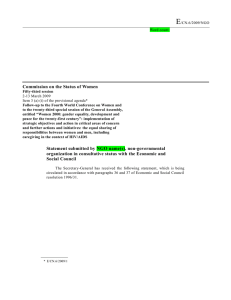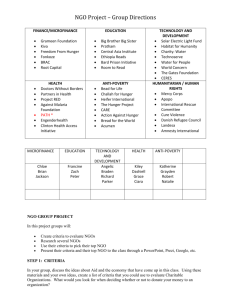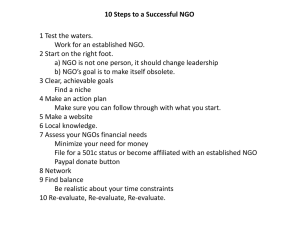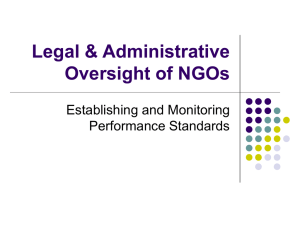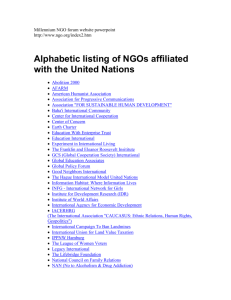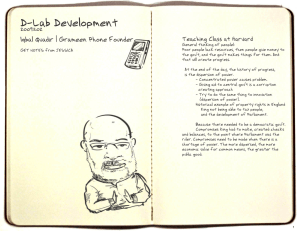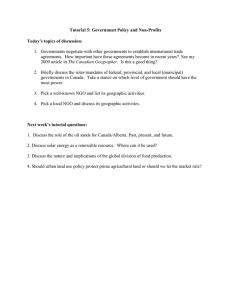Summary of Country and Participants Statement CEAFM Workshop
advertisement
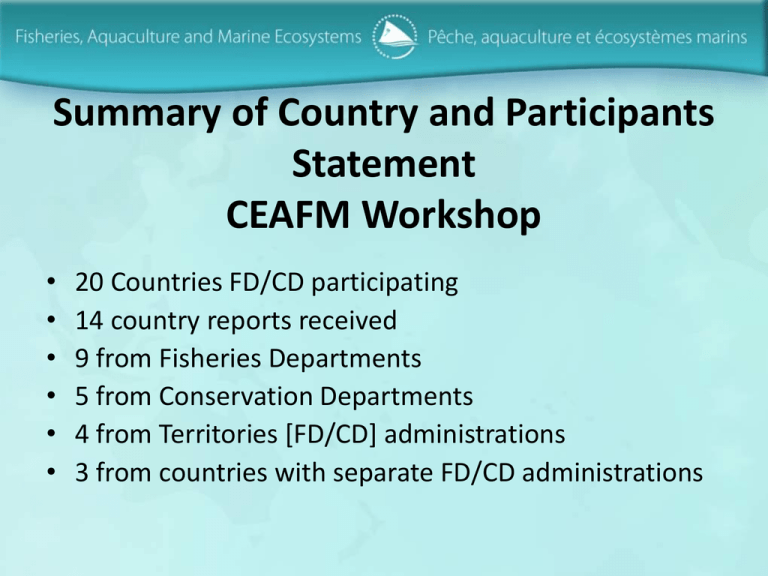
Summary of Country and Participants Statement CEAFM Workshop • • • • • • 20 Countries FD/CD participating 14 country reports received 9 from Fisheries Departments 5 from Conservation Departments 4 from Territories [FD/CD] administrations 3 from countries with separate FD/CD administrations CURRENT MANAGEMENT ACTIVITIES Conservation Management Measures Area closures (MMA’s/MPAs/SMAs) Restriction on species (e.g. size limits, protected species etc) Protecting spawning aggregations – seasons Gear restrictions (e.g. SCUBA, mesh size etc) Quotas (bag limits) Permits – licensing Management Plan (community/fishery) Prohibition on sale/export of species Restocking stock enhancement Management awareness programs Habitat restoration/protection (mangrove) Alternative livelihood Reviewing legislation Countries 14 6 TV 4 4 2 5 3 3 4 2 2 1 NGO 4 1 2 1 1 1 PLANNED MANAGEMENT PROJECTS Management Projects Establish area closures Strengthen CBFM Increase number of species regulated Manage spawning aggregations or seasons Address additional gear restrictions Develop-implement management plans Introduce penalty for habitat degradation Invasive species eradication Improve awareness programs Investigate-develop alternative livelihood Review legislation-regulations Research to improve MMAs Habitat protection Countries 5 3 3 WS 3 4 Guam 2 Tong 4 4 2 NGO 2 2 2 2 1 1 1 1 CURRENT MONITORING ACTIVITIES Resources Countries Selection of food fish (biological: age, growth) Guam Catch & Effort information 6 Documenting change in closures and non-closures 6 Baseline assessment 6 Density-size-distribution (invertebrate/finfish) 9 Monitoring for location-timing of spawning 2 Monitoring PETS 2 Habitats Coral monitoring-substrate cover 8 Communities reporting change in environment 3 Beach Profiling 1 Other Water Quality 2 Ciguatera CK Monitoring for compliance with management measures 2 Socio-economic monitoring - NGO 1 1 1 1 1 1 3 PLANNED MONITORING PROJECTS Projects Environmental, integrated, coastal monitoring Resources assessment Socio-economic assessment Improving catch and effort monitoring Baseline assessments Monitoring for location-timing of spawning aggregations/seasons PETS Resource restocking [habitat restoration] Feasibility study on new fisheries / alternatives Compare beach profiling information – coastal erosion study Ciguatera monitoring Training for local communities in Monitoring MMAs/MPAs Habitat mapping Develop protocols to monitor MMA Countries 4 4 2 2 3 1 NGO 1 1 3 1 2 WS 5 2 1 2 CURRENT COLLABORATIONS/PARTNERS Village communities-local authorities National environment, management committees Other Government Departments Environment NGOs: local Environment NGOs: regional, international CROP & International Organizations Research Institutions Private enterprise Tertiary Institutions Other countries for management examples Countries 7 8 11 9 6 7 3 2 3 W&F NGO 4 4 4 4 4 3 3 PLANNED COLLABORATIONS/PARTNERS Countries Village communities 2 National Environment management committees 2 Partner Government Departments 2 Environment NGOs: local 3 Environment NGOs: regional, international 3 Research Institutions FP Private enterprise FP Tertiary Institutions 1 Open to working with partners that can assist Guam NGO CHALLENGES Countries Funding 13 Jurisdiction overlaps 4 Use of different monitoring methods (comparison difficulties) 3 Implement activities on time 3 Increasing amount of work/broad scope 2 Lack the will to make decisions based of sound advice 5 Resources, management, monitoring limitations 10 Enforcement 4 Limited data 2 Limited awareness 5 High staff turnover, staff have to many responsibilities 2 Climate change, natural disasters WS Lag time to get legislation/regs passed Ton Support at community level 7 Conflicting policies 2 NGO 3 1 1 2 1 1 1 Last slide A few country reports mention overarching legislation: -provide for communities/local authorities to manage resources at the community/local authority level Some principles in legislation: -environmental & information principles in relation to achieving sustainable use of fisheries -precautionary approach -impacts of fishing on non-target species and marine environment -biological diversity of the aquatic environment - prevention-reduction-control of pollution -prevention of damage to flora and fauna -traditional fishing methods/practices -consultative process
